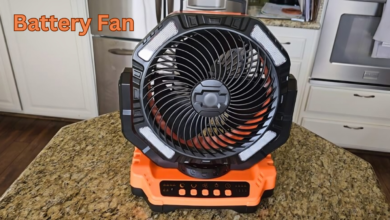Foris SFM Compile A Comprehensive Guide

Foris SFM Compile is a key process in the world of Source Filmmaker (SFM), allowing creators to breathe life into their models and animations. Whether you’re a beginner looking to explore this fascinating tool or a seasoned animator seeking optimization tips, this article will guide you through the basics, benefits, and techniques for compiling assets using Foris SFM.
What is Source Filmmaker (SFM)?
Before diving into Foris SFM Compile, it’s essential to understand the foundation: Source Filmmaker. SFM is a video creation tool by Valve Corporation that uses the Source game engine. It allows users to create detailed 3D animations, leveraging assets from Valve games like Team Fortress 2, Portal, and Half-Life.
SFM is widely appreciated for its user-friendly interface, extensive community support, and versatility in handling various animation styles, from cinematic storytelling to quirky short films. However, the true magic of SFM lies in the ability to import and customize models, where tools like Foris SFM Compile come into play.
What is Foris SFM Compile?
Foris SFM Compile is a utility or process that assists in converting 3D models, textures, and animations into formats compatible with Source Filmmaker. It bridges the gap between raw 3D files and SFM-ready assets, enabling creators to import customized or third-party models for use in their animations.
This process typically involves several steps:
- Model Preparation: Cleaning and organizing the 3D model in modeling software like Blender, Maya, or 3ds Max.
- Compiling Assets: Using tools such as Foris to convert these assets into the Source-compatible format (.MDL).
- Testing in SFM: Ensuring the model functions correctly within SFM’s interface.
Why Use Foris SFM Compile?
1. Custom Models for Unique Creations
The built-in assets of SFM are fantastic, but their variety can be limiting. With Foris SFM Compile, you can import your models or third-party assets, providing endless creative possibilities.
2. Optimization for Performance
Models imported directly without proper compilation can cause performance issues. Foris helps streamline the assets, ensuring smoother rendering and playback in SFM.
3. Improved Animation Flexibility
Compiled models often include rigs and bones, which make them easier to animate. Foris ensures these structures are optimized for seamless interaction in SFM.
4. Community Collaboration
Foris SFM Compile empowers creators to share their models and resources, enriching the SFM community. Sharing properly compiled assets saves time and enhances the quality of projects.
How to Use Foris SFM Compile
Using Foris SFM Compile can seem daunting at first, but the process becomes intuitive with a little practice. Here’s a step-by-step guide to help you get started:
Step 1: Prepare Your Model
- Choose Modeling Software: Use popular 3D software like Blender or Maya to create or edit your model.
- Optimize the Geometry: Ensure the model’s polygon count is suitable for SFM. High-poly models can cause performance issues.
- Apply Textures: Assign materials and textures to your model. Use tools like Substance Painter for advanced texturing.
Step 2: Export Your Model
- Export your model in a format compatible with Source tools, such as .FBX or .SMD.
- Ensure your textures are saved in compatible formats like .VTF (Valve Texture Format).
Step 3: Compile Using Foris
- Download Foris SFM Compile: If you haven’t already, download the latest version of Foris.
- Load the Model: Open the Foris interface and load your model file.
- Adjust Settings: Configure the compilation settings, including scale, bone weights, and collision models.
- Compile: Click the compile button to convert the file into the .MDL format.
Step 4: Import into SFM
- Place the compiled files in SFM’s designated model folders.
- Open Source Filmmaker and check if your model appears in the model browser.
- Test animations and textures to ensure everything works as intended.
Best Practices for Foris SFM Compile
- Keep a Backup: Always maintain a backup of your original files to avoid losing progress if issues arise.
- Optimize Textures: Use compressed textures to balance quality and performance.
- Simplify Rigging: Overcomplicated rigs can lead to errors during compilation.
- Test Frequently: Import and test your model in SFM regularly during the compilation process to identify and resolve issues early.
Troubleshooting Common Issues
1. Model Doesn’t Appear in SFM
- Ensure the model is placed in the correct folder path.
- Verify the .QC file contains accurate references to the model and textures.
2. Missing Textures
- Check that all texture files are correctly linked in the .QC file.
- Confirm that textures are saved in the .VTF format.
3. Animation Errors
- Review the rigging and ensure bone weights are properly assigned in your modeling software.
Alternatives to Foris SFM Compile
While Foris SFM Compile is a powerful tool, other options are available for model compilation:
- Crowbar: A popular tool for decompiling and compiling Source models.
- Blender Source Tools: A plugin for Blender that streamlines the export of Source-compatible models.
- StudioMDL: Valve’s official model compiler.
Each tool has its strengths, and choosing the right one depends on your specific needs and experience level.
Conclusion
Foris SFM Compile is an indispensable tool for animators and creators who want to expand their horizons in Source Filmmaker. It transforms raw 3D models into polished assets, enabling unique and dynamic animations. By mastering this tool, you can unlock a world of creative potential and contribute to the ever-growing SFM community.
Whether you’re crafting cinematic masterpieces or experimenting with quirky animations, Foris ensres your models are ready to shine. Dive in, explore, and bring your visions to life with the power of Source Filmmaker and Foris SFM Compile!



